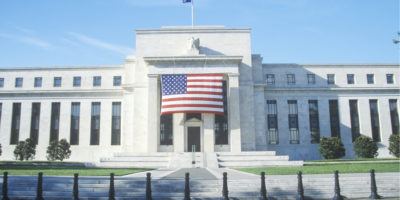Narrow Banks, Very Narrow Banks, and the Federal Reserve
A bank charter has been granted to The Narrow Bank in Connecticut. But the idea of narrow banking is not new. The name “narrow bank” was created by Robert Litan (1987) to describe a type of bank that he proposed. Since then, the term “narrow bank” has been used to describe earlier very low-risk banks proposed, for example, by Simons (1948), Douglas et al. (1939), and Friedman (1959).
There are two versions of narrow banks. One type of narrow bank would hold only short-term Treasury securities. Another type of narrow bank would hold only reserves at the Federal Reserve.
Banks would be required to hold 100 percent reserves against deposits under what has been called the “Chicago Proposal” of the 1930s. The name Chicago Proposal is at least partly due to advocacy by Henry Simons at the University of Chicago. The banks’ 100 percent reserves would be deposits at the Federal Reserve. At the time of the original proposal — the 1930s — commercial banks in the United States held large amounts of excess reserves and of U.S. government securities. To simplify the transition, the proposal allowed banks to count existing holdings of government securities. Eventually banks would exchange all of their government securities for deposits at the Federal Reserve and would hold 100 percent reserves against deposits.
The Chicago plan, as published in a 1939 report, did not concern itself with bank deposits other than demand deposits, perhaps because only demand deposits were part of the circulating medium affecting the price level. A major goal of the proposal was to end the multiple expansion of deposits, runs and banks and to limit the use of substitutes for demand deposits.
While perhaps desirable from some points of view, banks with 100 percent reserves have trouble attracting depositors. The proposal included the Federal Reserve’s practice until recently of paying no interest on reserves. Banks with 100 percent reserves paying no interest would have to charge their depositors for all services offered, including storing funds at the central bank. Customers’ payments charges would be the banks’ only source of revenue. Banks would not be providing services like Zelle to transfer funds to depositors in other banks at no charge, as many do today. Not surprisingly, therefore, banks were not expected to voluntarily migrate to the Chicago plan, and none has.
Robert Litan (1987) and others proposed a restricted form of banking that puts fewer limits on the assets held by banks than in the Chicago plan. Some banks’ holdings of assets would be limited to government securities, generally short-term government securities. Litan coined the term “narrow bank” for these banks. In a way, such banks have caught on; they are called government money market mutual funds in the United States. Money market mutual funds of course are not legally “banks.” Still, government money market mutual funds hold only short-term government securities and effectively promise to redeem customers’ investments on demand at par value, many even redeeming by check if desired.
The Narrow Bank, chartered in Connecticut, is neither a money market mutual fund nor a narrow bank as proposed by Litan and others. It is more similar to banks in the Chicago plan because it would hold only reserves at the Federal Reserve. Such a bank could be called a “very narrow bank” to make the difference clear. The Chicago plan for very narrow banks required banks to hold reserves that paid zero interest at the time. Reserves at the Federal Reserve have paid positive interest rates since October 2008. Is it possible that some depositors would want to hold such deposits?
The Narrow Bank thinks there is a particular demand for a very narrow bank. The Narrow Bank is not proposing to start a general banking business. Rather, The Narrow Bank proposes to accept large deposits only from selected large institutions and will not provide services commonly provided by commercial banks such as redemption by check, debit cards, or ATMs. This very narrow business can provide a service useful to selected depositors because The Narrow Bank can earn interest on deposits at the Federal Reserve and pay that interest to large institutions minus The Narrow Bank’s relatively small costs.
The interest rate on reserves held at the Federal Reserve generally has been higher than many other short-term interest rates. Institutions that cannot earn interest on deposits at the Federal Reserve would like to receive it instead of the other, lower interest rates available to them. There are institutions that have deposits at the Federal Reserve and cannot earn interest on those deposits: Federal Home Loan Banks and the government-sponsored enterprises Fannie Mae and Freddie Mac. These institutions have been receiving some interest on their reserves by lending their deposits to banks at the federal funds rate, an interest rate that has typically been less than the interest rate paid on reserves since October 2008, when the Fed began paying interest on reserves. Other, larger institutions such as money market mutual funds cannot have deposits at the Federal Reserve and have been earning interest on many assets at rates lower than the interest rate on reserves available to banks.
If The Narrow Bank begins operation, interest rates on overnight risk-free debt will seldom if ever be below the interest rate on reserves less The Narrow Bank’s small costs. The subsidy received by commercial banks as a higher interest rate available to them and not others will be eliminated. Roughly the same overnight risk-free rate will be available to all. And The Narrow Bank will be holding nothing but completely risk-free deposits at the Federal Reserve.
What could go wrong? The creation of very narrow banks, like any innovation, can make things better and can create unforeseen problems. The Federal Reserve Board is attempting to prevent The Narrow Bank from starting operation. Its notice of a proposed rule on paying differential interest rates to different banks relies on possible problems as reasons to prevent The Narrow Bank from starting operation. The problems are “possible,” with no discussion or evidence that the problems are even remotely plausible. J.P. Koning has considered the arguments. It was also the topic of discussion at a recent American Enterprise Institute event. In brief: if other innovations were subject to the same risk-reward calculus applied by the Federal Reserve to very narrow banks, it is hard to imagine many that would pass muster.











